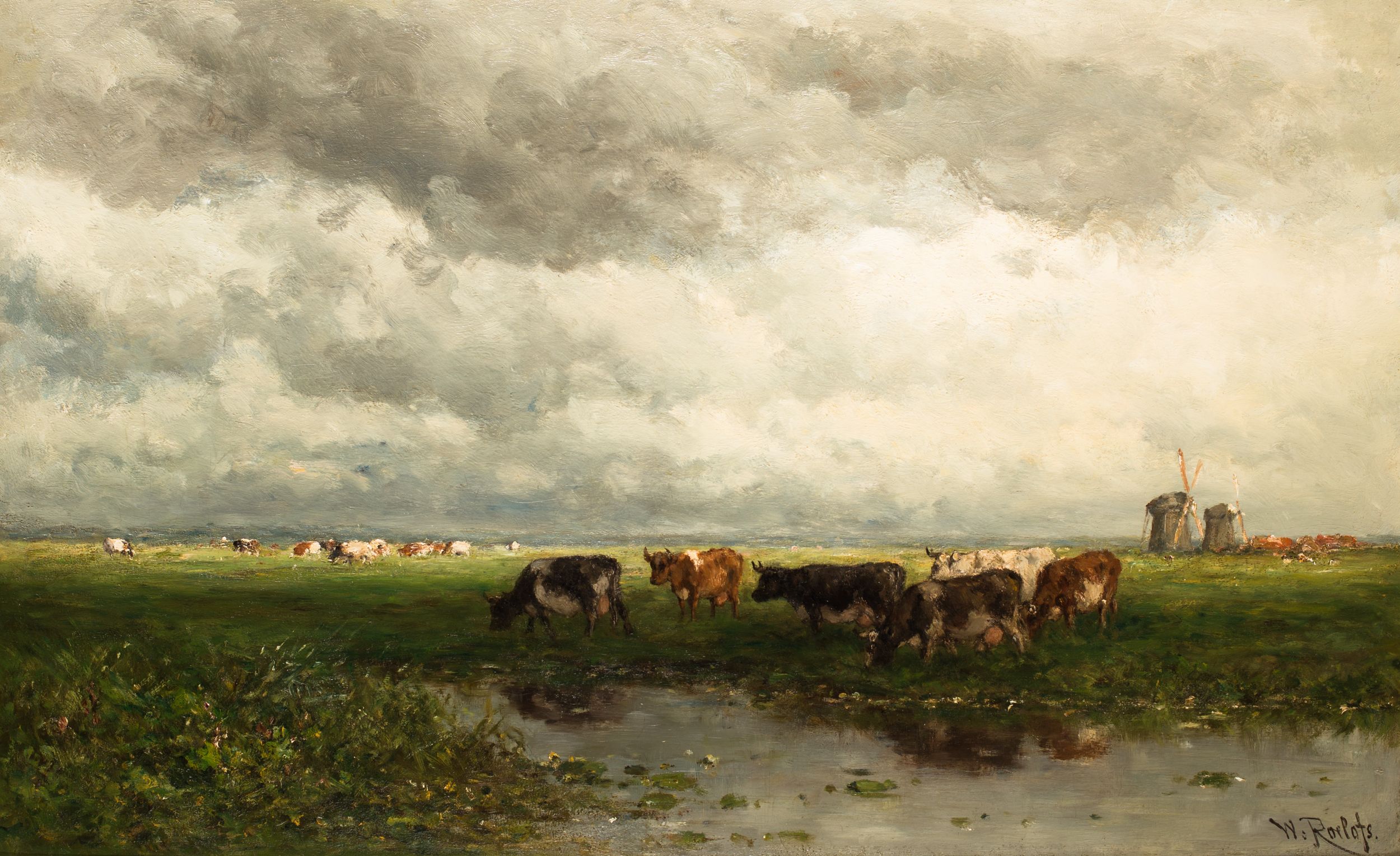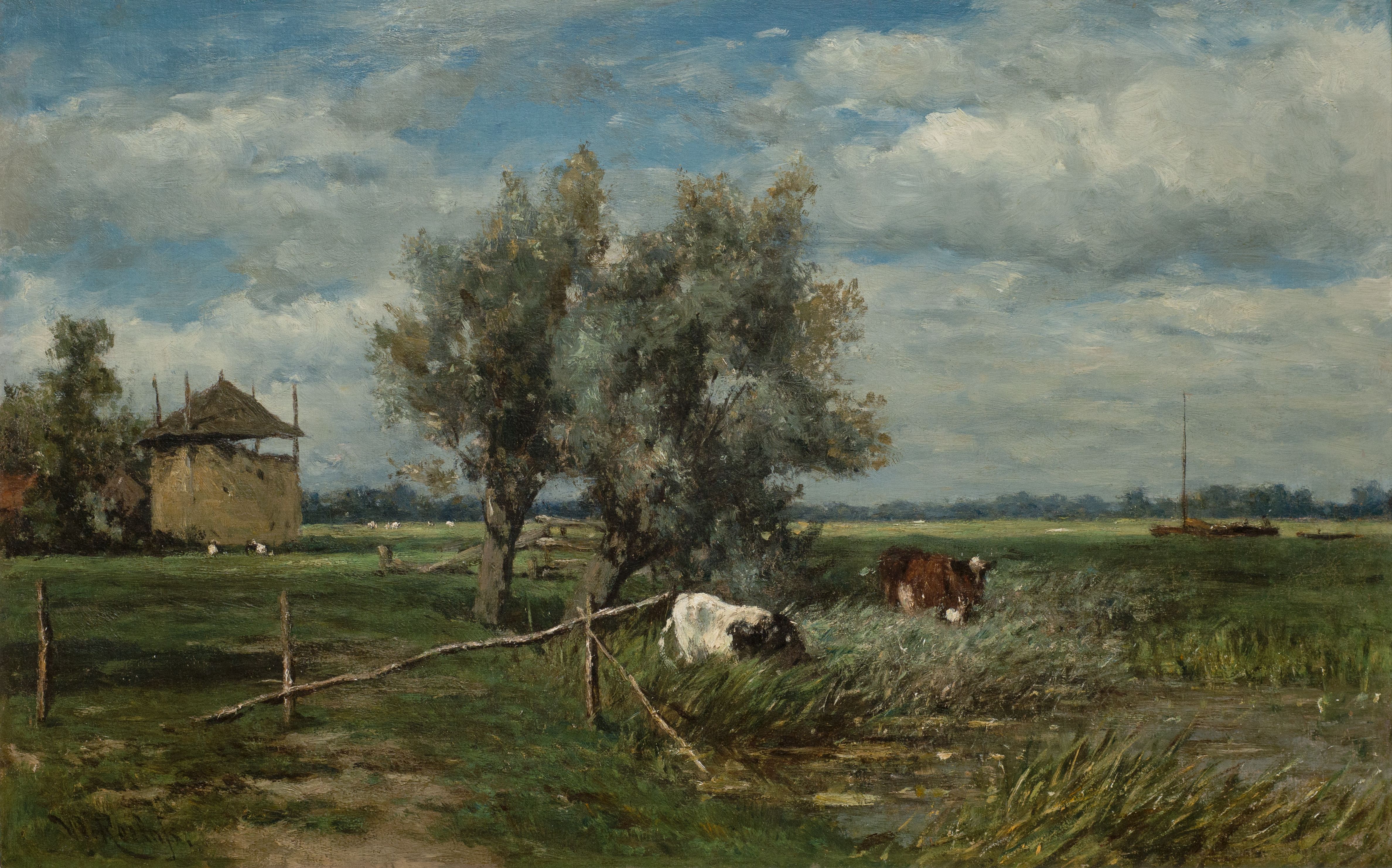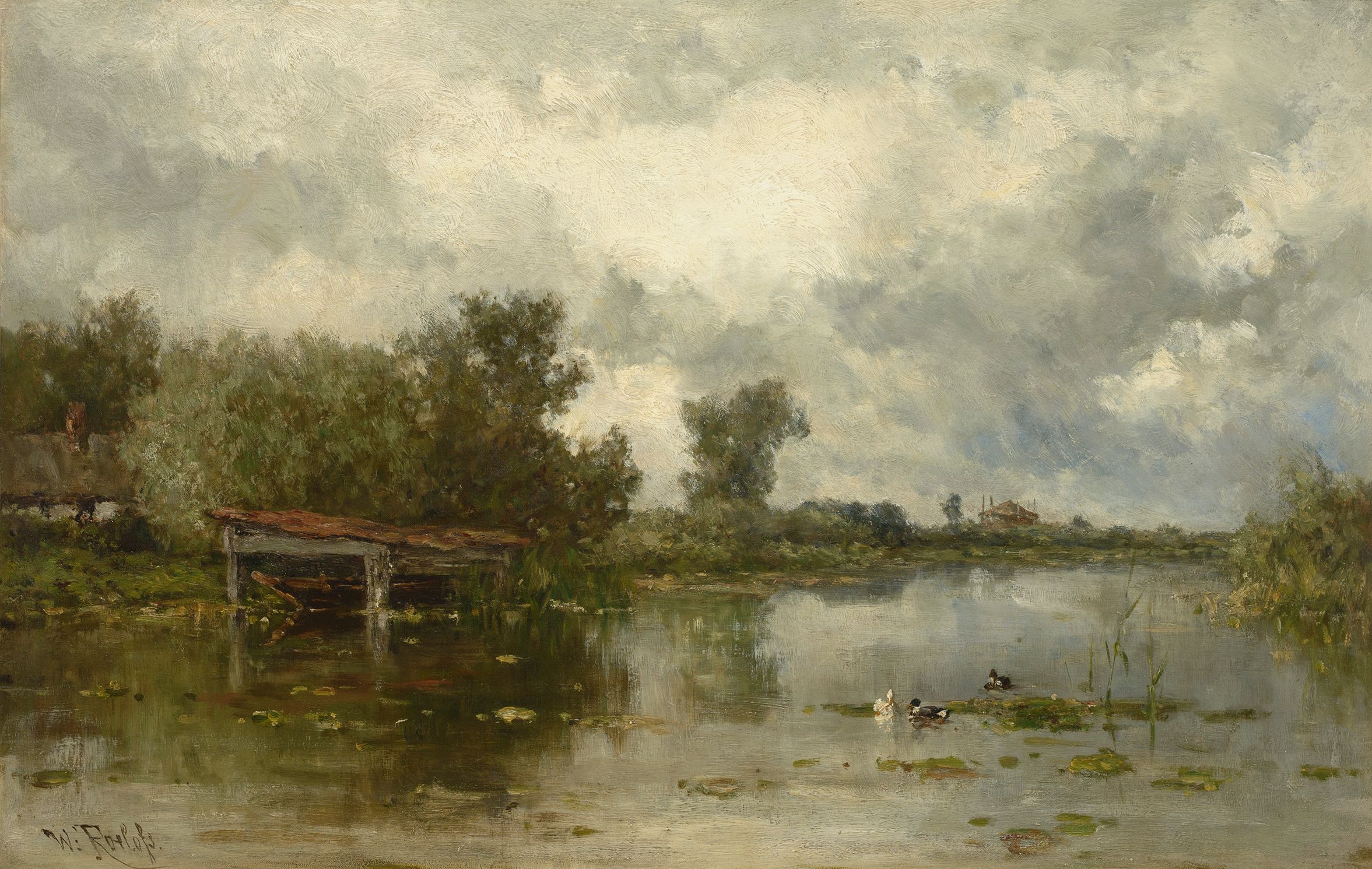W. (WILLEM) ROELOFS 1822 Amsterdam - 1897 Berchem Meadow with Cows
Oil / Canvas: 65,5 x 106 cm
- This artwork can be viewed in our gallery
- Call us for more information: +31 26 361 1876
- World wide shipping available
Width: 106 cm
Private collection The Netherlands
Over W. (WILLEM) ROELOFS
Willem Roelofs is considered one of the founders of the Hague School and the most important innovator of landscape painting in the course of the 1850s. In 1847 he moved from The Hague to Brussels; partly because of troubles in his love life, as Roelofs' parents did not agree with Willem's choice of partner, and partly because Roelofs envisioned better artistic and commercial opportunities in Brussels.
The first years in Brussels he still painted landscapes in the tradition of the Dutch Romantic School.
Influenced by the Barbizon painters, his brushwork became looser and the landscape more " realistic ". After creating some landscapes in the surroundings of Fontainebleau and Barbizon, he devoted himself primarily to depicting the Dutch landscape. As often as he could after 1856 he traveled in the summer to the green heart of Holland, Drenthe and along the great rivers to find new inspiration for his paintings. Roelofs was most fascinated by cattle in polder landscapes, river scenes, watering holes with cows and ponds. Nature in all its facets interested him, not only cattle attracted his attention, but also smaller animals. Thus, he was a passionate practitioner of entomology.
Although Roelofs was an innovator, he did not go to the extent of adopting the credo of gray painting of his Hague painter friends. He considered color and form too important and more in tune with nature than a painter like Jacob Maris (1837-1899). Roelofs began painting cattle after 1867; in clear tones and loose brushstrokes he recorded his characteristic landscapes with cattle. Like no other, Roelofs was aware of the connection between the sky and the landscape.
Both were a unity and if changes in one location were not followed by adjustments in the other, the painting would have failed. Therefore, he felt it was important to make many studies of nature. In May 1866 he wrote a letter to his pupil H.W. Mesdag (1831-1915), and Roelofs advised him to "imitate nature with feeling but without thinking of the work of others.
The intended unity between landscape and sky is magnificently expressed in the painting shown here. The cows are indulging in the water from the pond in which they are standing. Their hides gleam from the sunlight that shows itself between the gray-blue clouds, in the water and in parts of the landscape. Across the street, on the second plane, are an overhead windmill and a farmhouse. In the distance, the subtle transition can be seen from the optical gray of the horizon to the lighter gray of the sky. For the last ten years of his life, Roelofs lived in The Hague again. Shortly before his death, he left again for Brussels, but would not arrive there. Halfway to Brussels, he would die with relatives in Berchem near Antwerp.


